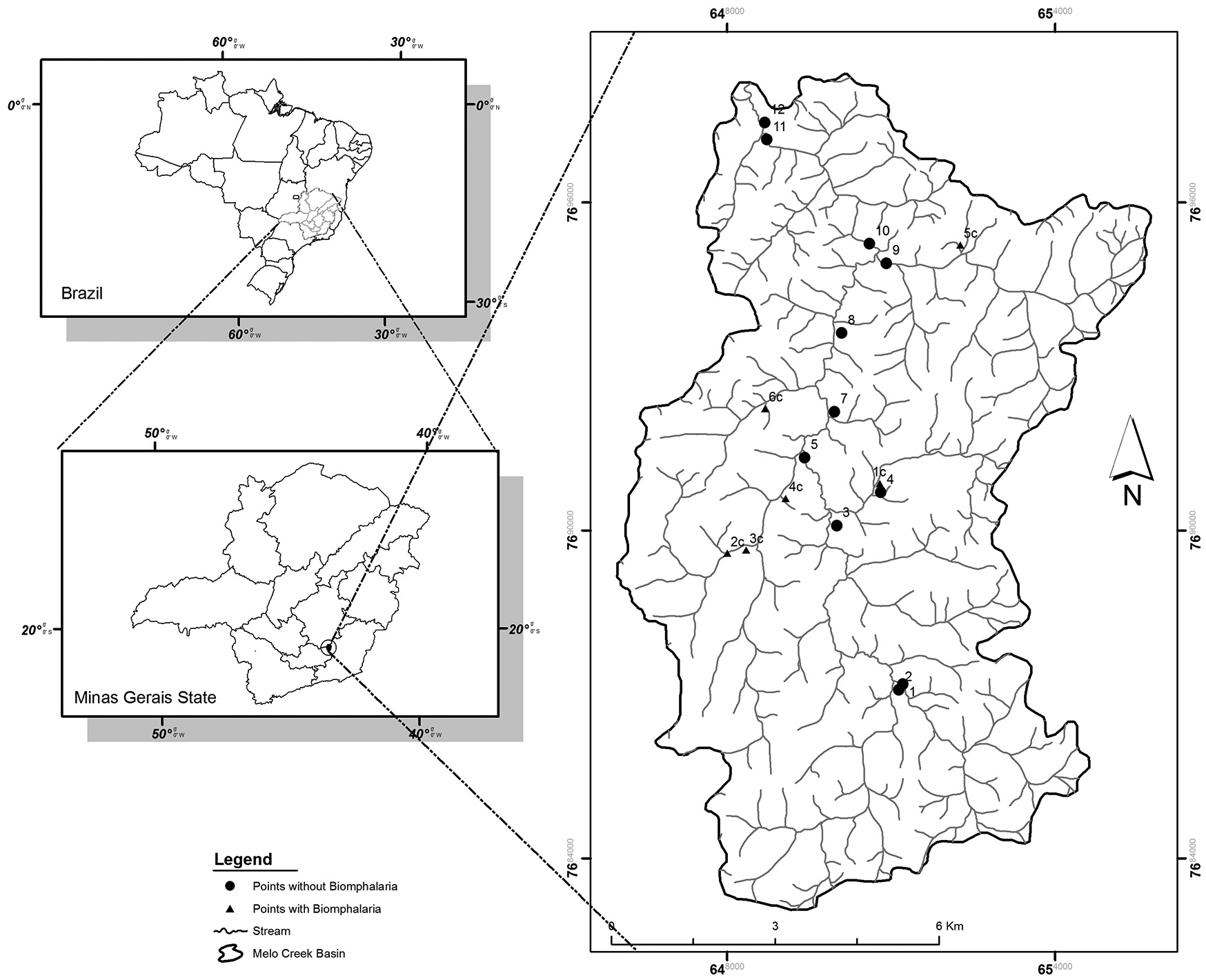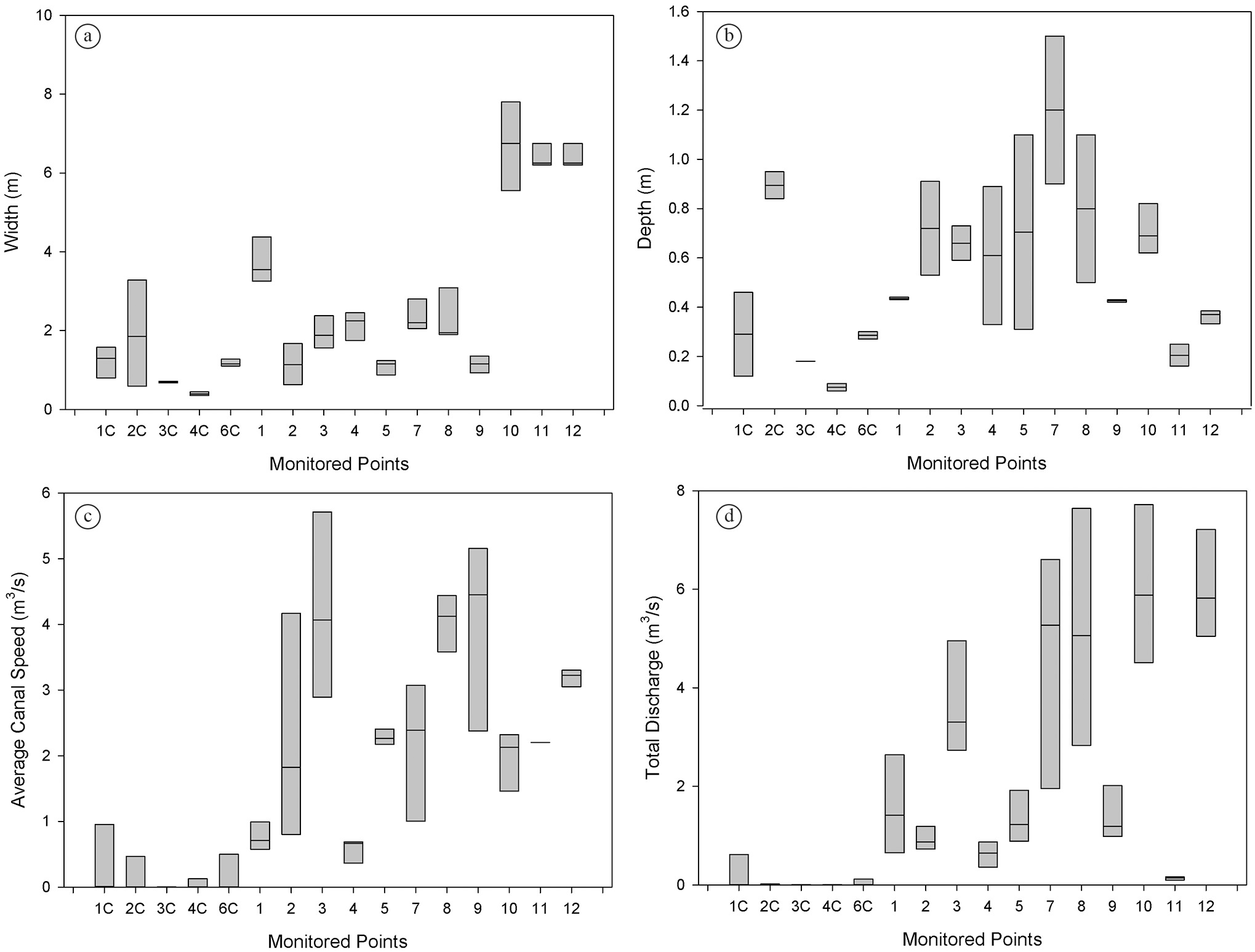Abstract
This study analyzed the presence of Biomphalaria in Melo creek basin, Minas Gerais state, and its relationship to irrigation canals. Seventeen of these canals were used to determine a limnological, morphological and hydrological characterization during an annual seasonal cycle. Biomphalaria samples were sent to René Rachou Research Center/FIOCRUZ for identification and parasitological examination. Six canals were identified as breeding areas for mollusks and in one of them it was registered the coexistence of B. tenagophila (first report to this basin) and B. glabrata species. Results indicated that the low flow rate and speed of water flow were the main characteristics that contributed to this specific growth of the mollusks in the area. These hydraulic characteristics were created due to anthropogenic action through the canalization of lotic areas in Melo creek, which allowed ideal ecological conditions to Biomphalaria outbreak. The results emphasize the need of adequate handling and constant monitoring of the hydrographic basin, subject to inadequate phytosanitary conditions, aiming to prevent the occurrence and propagation of schistosomiasis.
Keywords:
mollusk; limnology; hydrology; watershed management; Brazil

 Thumbnail
Thumbnail
 Thumbnail
Thumbnail

